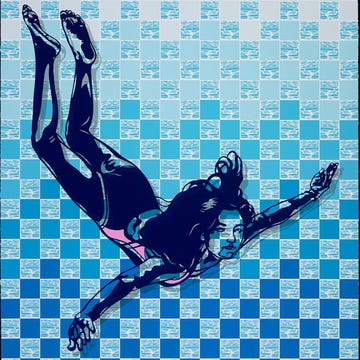Art of Manga is the largest exhibition of manga in U.S. history. Opening September 27 at San Francisco’s de Young Museum, the show is located in the first American city to produce original manga, nearly a century ago.
The exhibit presents over 700 original artworks from major Japanese publishers—a curatorial feat, as manga publishers are protective of the artists they represent and rarely exhibit their work next to that of their peers. The centerpiece is hundreds of genga—original manga drawings, the oldest one at the exhibition dating to 1965.
Anchoring the show are works by three influential contemporary manga creators, Rumiko Takahashi, Jirō Taniguchi, and Eiichiro Oda. Their classic series—Ranma ½, The Walking Man, and One Piece, respectively—demonstrate the form’s extraordinary range. The show also highlights pioneers like Astro Boy creator Osamu Tezuka and Hirohiko Araki, whose long-running series JoJo’s Bizarre Adventure has over 120 million copies in circulation, as well as examples of the genre’s infinite niche subcategories: animal-fandom manga and entire epics about food and wine.
In 2023, manga accounted for 43 percent of the U.S. graphic novel and comics market. It’s the fourth-best-selling book category overall, according to the exhibition’s catalog, and this year, it’s estimated to bring in $1.2 billion in print and digital sales.
“Manga is an immersive narrative language with its own grammar,” says curator Nicole Rousmaniere, a scholar of Japanese art who curated the British Museum’s manga exhibition in 2019. She connects manga to other visual mediums, like the ukiyo-e woodblock prints epitomized by Hokusai’s 1831 masterwork The Great Wave Off Kanagawa.
Rousmaniere expects that museum visitors will be surprised by the subtle details of ink flow, screen tone, rinkaku (line quality), and notan in the source material. “By the time they leave the exhibit, everyone will be fluent in manga,” she says.
Manga’s U.S. origins begin with artist Henry Yoshitaka Kiyama, who moved to San Francisco in 1904 to study art at the California School of Design. In 1931, Kiyama published a semi-autobiographical work, The Four Students Manga, that captured his San Francisco life, including the 1906 earthquake and anti-Japanese discrimination he and his friends experienced. The book is a pioneering work of manga that also happens to be one of the first graphic novels published in the United States.
The Bay Area continued to be a conduit for the genre with the 1969 opening of Kinokuniya, a Japanese bookstore chain that established its first U.S. location in San Francisco’s Japantown neighborhood. The shop provided literature to a swell of college fans, who passed around titles like Barefoot Gen and Phoenix.
In the mid-1980s, San Francisco publishers Viz Communications and Studio Proteus became the primary manga producers in the United States. Their early translated editions were laboriously reworked to better suit Western readers, adding color and “flipping” each page to produce a “flopped edition” that allowed panels to be read left to right and books front to back. (Japanese text and book pages are read in the opposite order.) Viz and other major manga publishers stopped “flipping” manga around 2002.
Viz brought many of Japan’s most popular kid-friendly manga to U.S. audiences, including Dragon Ball, Yu-Gi-Oh!, and Naruto. The publishers also translated adult-targeted works by horror artist Junji Itō, the psychedelic shojo manga of Junko Mizuno, and the ultraviolent Battle Royale. These titles demonstrated manga’s nuance to U.S. readers.
Today, Viz is still one of the largest manga publishers in the country. The Bay Area is also home to several small indie publishers, including Stone Bridge Press and Last Gasp. And Kinokuniya is still crowded with kids clamoring for the latest releases.
Longtime manga translator Fred Schodt tells me he’s amazed to see manga voraciously consumed in its original format, something he never believed possible when he was seeking distribution interest from U.S. publishers in the 1970s. “My grandchildren can go in one day from reading left to right to right to left,” he says. “It’s amazing how flexible their brains are.”•
THE ART OF MANGA
September 27, 2025–Janaury 25, 2026
de Young Musem
50 Hagiwara Tea Garden Dr., San Francisco
Chris Baker lives in Oakland, where he writes about pop culture and history for outlets like Wired, Rolling Stone, Slate, and his Substack.














